Survey at a Glance:
The What Motivates Shoppers to Write Reviews report is based on a survey of 9,286 US adults fielded in November 2022. Here’s a preview of our key findings.
- Nearly all (92%) of consumers submit reviews at least once every six months.
- Many are more prolific; 60% of shoppers write reviews multiple times per month.
- 42% of consumers only need to be asked once to leave a review before they’ll do it; the remaining 58% need to be asked at least twice.
- The top five motivations for submitting ratings and reviews include a positive experience (92%), receiving free product samples (86%), a negative experience (78%), incentives (76%), and helping others (72%).
- The top motivators for including an image in a review are free samples (86%), incentives (79%) and demonstrating good product quality (74%).
- The factors that motivate shoppers to include a video as part of their review include free samples (78%), incentives (74%), and demonstrating real-life usage of the product (63%).
- 86% of shoppers say they’re more likely to submit a rating and review if they’ve used the product in question multiple times.
- 35% need to buy or use a product three times before they’ll consider leaving a review.
- 69% of consumers are willing to provide a review within a week of receiving and using a product.
- 76% of shoppers say that an incentive motivates them to write reviews; incentives also motivate consumers to include photos (79%) and videos (74%) as part of their reviews.
- The most impactful incentives are receiving a product for free (93%) and getting access to a product before it’s sold to the general public (89%).
- 65% of consumers say incentives don’t affect the content of the reviews they submit.
- 89% of shoppers are more likely to submit a rating and review for a product if it has a low quantity of reviews.
- 89% of consumers say that reading existing reviews increases their likelihood of leaving one.
Contents
Introduction
If there’s one thing we can say with certainty, it’s this: reviews matter. A lot. Research tells us nearly 94% of consumers always or regularly read reviews when shopping online; 57% of consumers do so when shopping in a brick-and-mortar store.
The very presence of this content drives traffic and conversion for brands and retailers – and provides a boatload of insights for improving products, services, and experiences.
Clearly, reviews are a powerful tool for consumers and businesses alike. So it’s no surprise that one of the most common questions we get from brands and retailers is, “how do we generate more of this content?”
The good news is, many consumers are willing to contribute ratings and reviews – under the right circumstances. But what exactly are the ideal conditions for review generation?
Recently, we surveyed more than 9,000 adults in the U.S. to understand what motivates them to write reviews – and what factors impact their likelihood of doing so. In this report, we’ll share our key findings from this survey.
By understanding the behaviors and motivations of consumers, brands and retailers can more effectively create the right conditions – and start generating more reviews that’ll boost shopper confidence and conversion rates.
Who We Surveyed
This report is based on a survey of 9,286 adults in the US. The survey was fielded in November 2022.
Here’s a more detailed look at who we surveyed.
Generations
(1997-present)

(1981-1996)

(1965-1980)

(1946-1964)

Household Income
Average Overall Monthly Online Spend
Review Submission Frequency
Previous research found that nearly all shoppers consult reviews at least sometimes when shopping online. But how often do they submit their own content?
Most Consumers Leave Ratings and Reviews
92% submit reviews at least once every six months, and 60% claim to do so multiple times per month.
While consumers of all ages are submitting ratings and reviews, younger shoppers are slightly more prolific.
Oftentimes, One Ask Isn’t Enough
Research tells us the vast majority of reviews are the result of a post purchase email. Essentially, this is an email a brand or retailer sends to a customer, asking them to review their recent purchases.
This year, 42% of consumers said they only need to be asked once before they’ll leave a review (down significantly from 68% last year). On the other hand, 47% need a second reminder (up significantly from 28%).
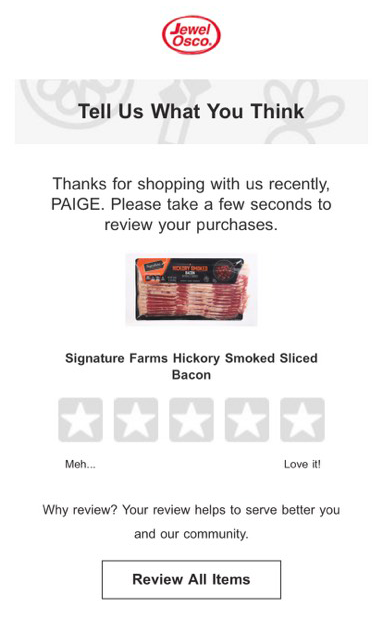
Of note, younger shoppers are more likely to need additional reminders than their older counterparts. So don’t hesitate to send a second post purchase email. It’s a sure way to generate additional ratings and reviews.
Top Motivators for Submitting Review Content
Most consumers leave ratings and reviews at least sometimes. But what are their motivations for doing so?
92% of consumers say a great experience would motivate them to leave a review. Other top motivators include free product samples (86%), a negative experience (78%), incentives (76%), and the desire to help and guide others (72%). Notably, all factors rank in the same order as they did last year in terms of importance.
While a positive experience and free samples are the top two motivators across all generations, there are some slight variations elsewhere in the rankings. For example, Gen Z shoppers are more motivated by helping others than by negative experiences and incentives.
Top Motivators for Submitting Visual Content
A recent survey found that 77% of consumers always or regularly seek out visual content from their peers when considering a purchase. And 85% say they’re more likely to buy a product if it has reviews that include user-generated photos and videos.
It’s important to start generating more photos and videos as part of reviews. But what motivates shoppers to include this content as part of reviews?
What Motivates Consumers to Submit Photos as Part of Reviews?
In line with last year, the top three motivators for consumers to submit a photo with a review include free samples (86%), incentives (79%), and the ability to demonstrate good product quality (74%).
Motivations rank in the same order for all generations. However, there are subtle differences in the percentage of consumers who indicate each factor motivates them to submit a photo as part of a review. For example, free samples and incentives are more likely to motivate Gen Z shoppers than Boomers.
What Motivates Consumers to Submit Videos Alongside Written Reviews?
Not surprisingly, free samples (78%) and incentives (74%) are also the top motivators for consumers to leave videos as part of a review. The ability to demonstrate real-life product usage rounds out the top three motivators.
However, offering any of these incentives is more likely to motivate a consumer to submit a photo than a video based on our research. So if you are looking specifically for video content, you should specifically incentivize the submission of this content.
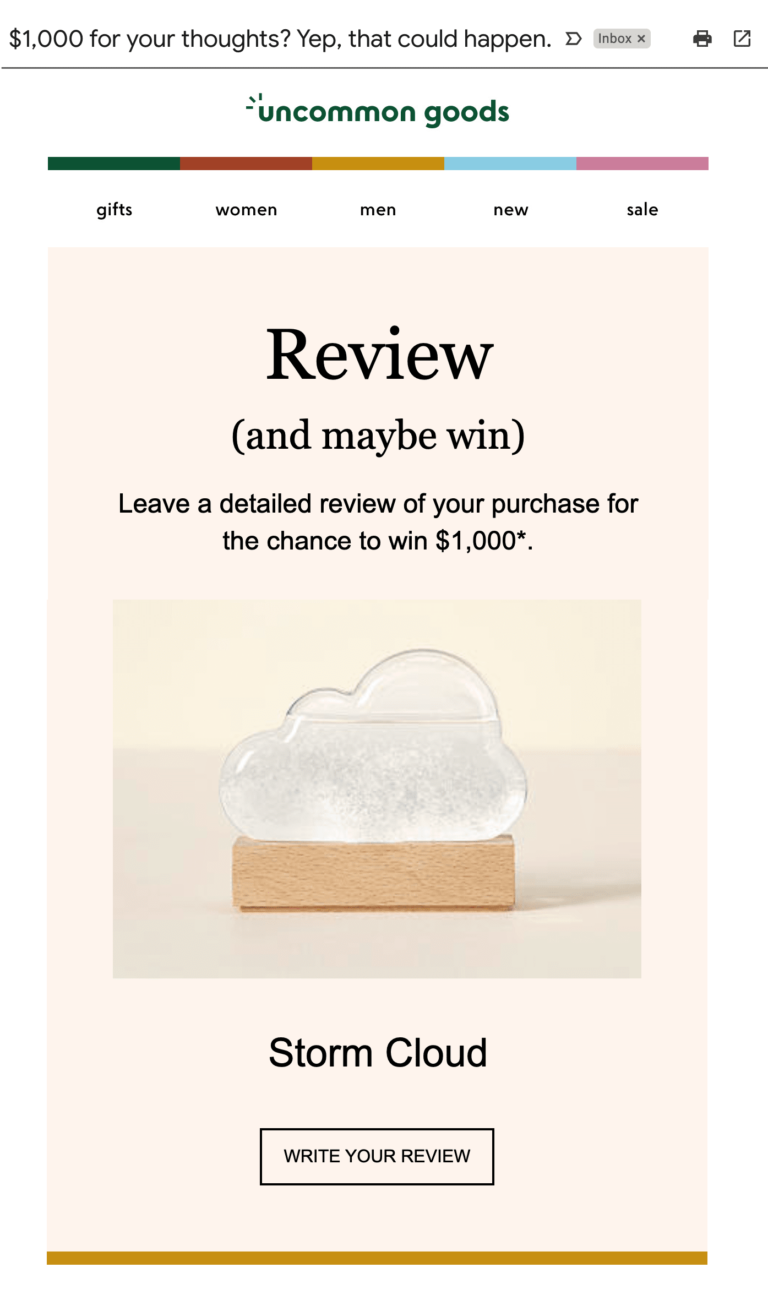
Different generations value each incentive in roughly the same order (i.e. free samples came out on top consistently). However, in general, younger shoppers are more likely to be motivated to submit a video due to these factors than older shoppers.
How Incentives Impact Review Volume
Nearly eight in 10 consumers say that an incentive would motivate them to submit a rating and review. But what incentives are most impactful?
Again this year, two incentives stand out: Free samples and early access.
There are slight differences in the impact of incentives on different variations. For example, in general, incentives are less impactful on Boomers. In addition, Gen Z is the only group to indicate that loyalty points are more motivating than discounts.
Balancing desire for incentives with review authenticity
Clearly, incentives can be a powerful way to boost review volume. Yet some brands and retailers hesitate to offer them for fear they’ll have an impact on the authenticity of the review. For example, they may think shoppers are more likely to submit a positive review if they’ve received an incentive.
For the most part, these concerns are unfounded. Most (65%) of consumers indicate that incentives don’t affect what they write in a review. Notably, Gen Z shoppers are the group most likely to say an incentive does impact what they write in a review.
Yet, it’s still important to badge any reviews that are generated as the result of an incentive. Doing so is an important way to maintain transparency and preserve shoppers’ trust.

When Consumers Opt to Write Reviews
When asking for reviews, brands and retailers must consider timing. Asking too soon means the consumer may not have had time to use the product enough to form an opinion. But asking too late might mean the consumer is no longer engaged.
Most Consumers Will Write Reviews Soon After a Product’s Arrival
At what point in time are consumers willing to provide a rating and review for a product they purchased? This year, the greatest portion – 34% – say they’ll provide a review within five to seven days of first using or receiving an item.
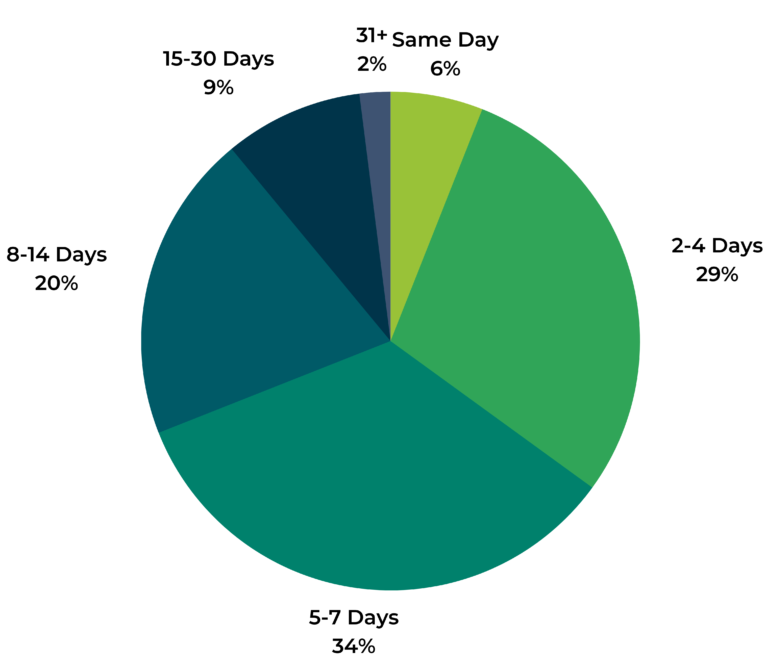
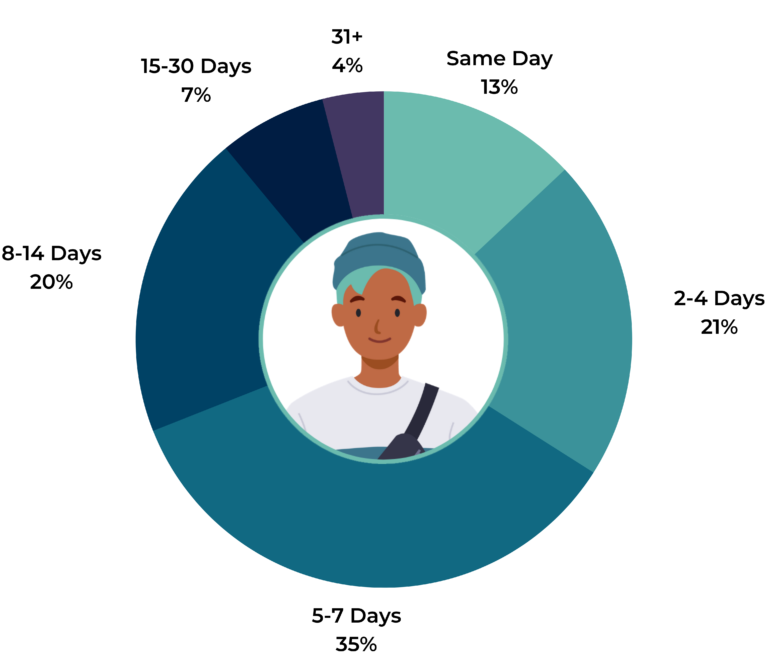
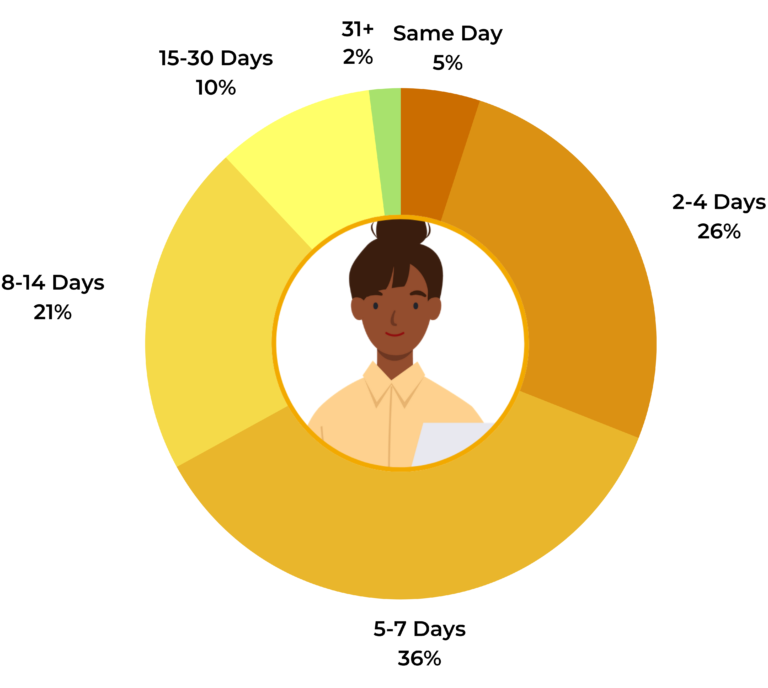
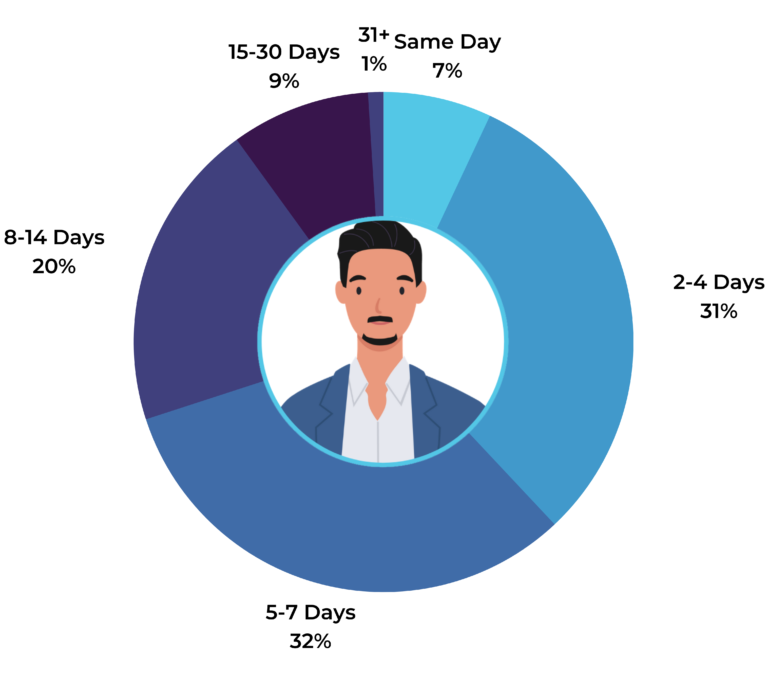
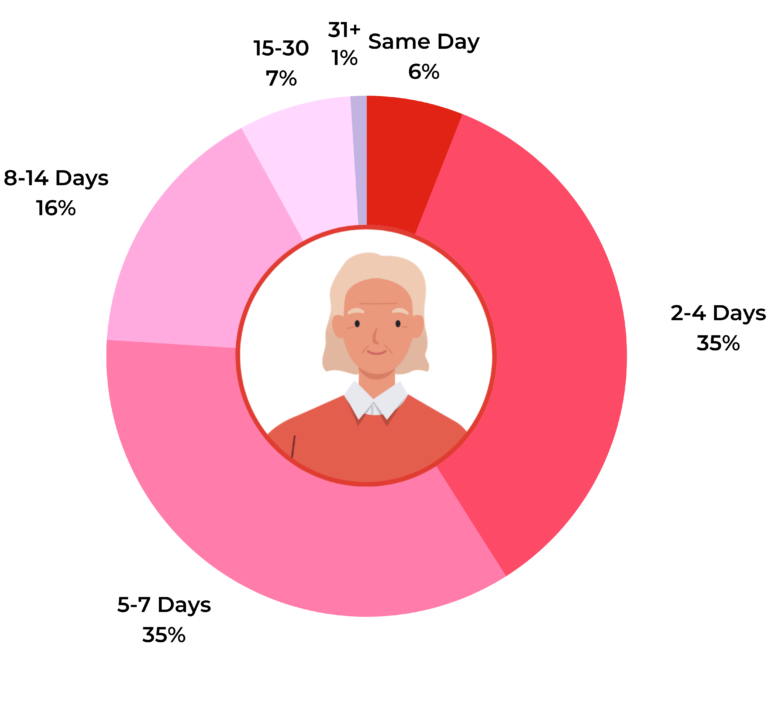
Interestingly, Gen Z’ers are the group most likely to leave a review the same day they receive or try the product in question. But they’re also the only group to indicate they’ll provide a rating and review after 60 days.
Using a Product More Than Once Increases Review Submission Likelihood
Oftentimes, shoppers need to use a product more than once before sharing their feedback. This year, 86% of consumers indicate they’re more likely to provide a rating and review if they’ve used the product in question more than once – up slightly from 81% in 2021.
Younger shoppers are more likely than older shoppers to indicate an increased willingness to provide ratings or reviews after using a product multiple times.
How many times does it take for a shopper to be willing to submit a review? The largest portion of shoppers – 35% – say they need to buy or use a product three times before leaving a review. This is up significantly from 20% in 2021.
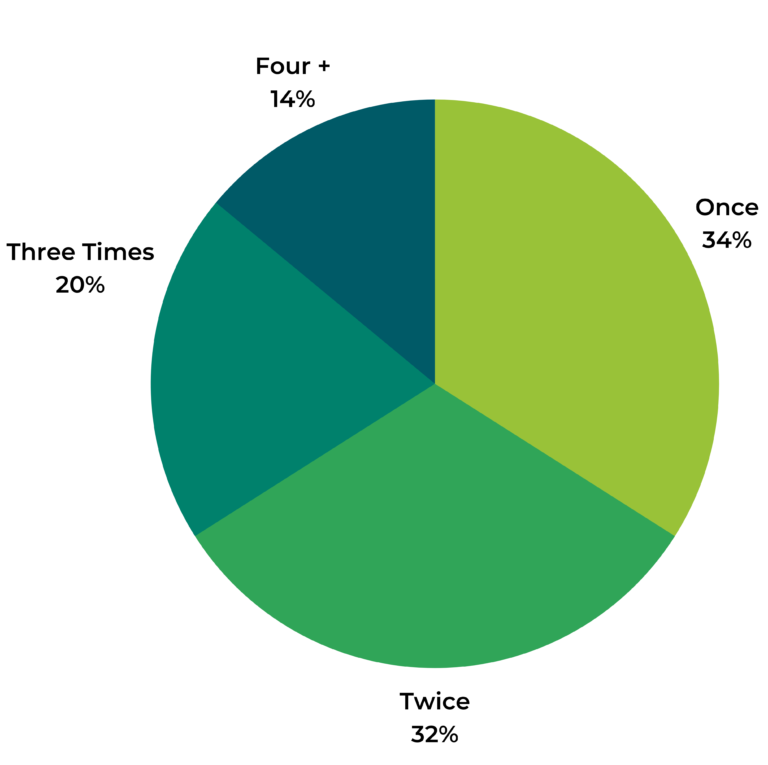
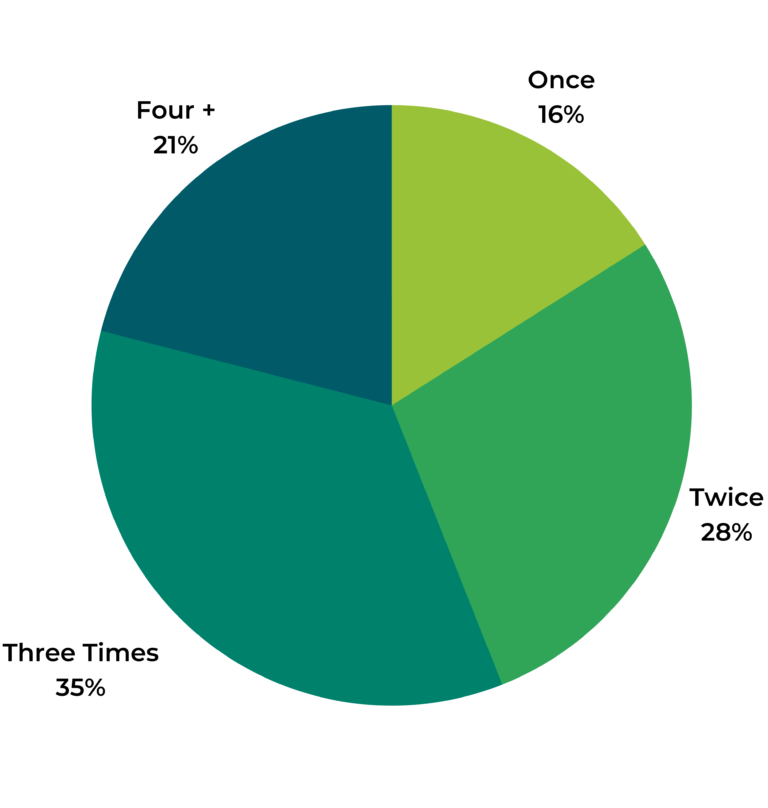
Interestingly, Boomers are the group most likely to leave a review after a single use of a product – as well as the group least likely to post feedback after using a product four or more times.
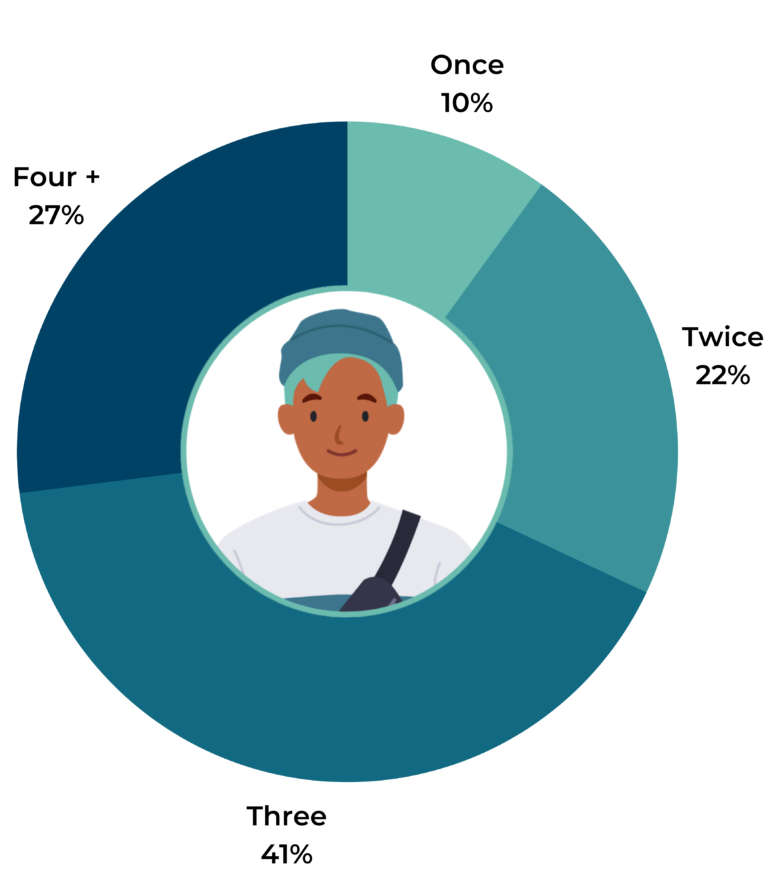
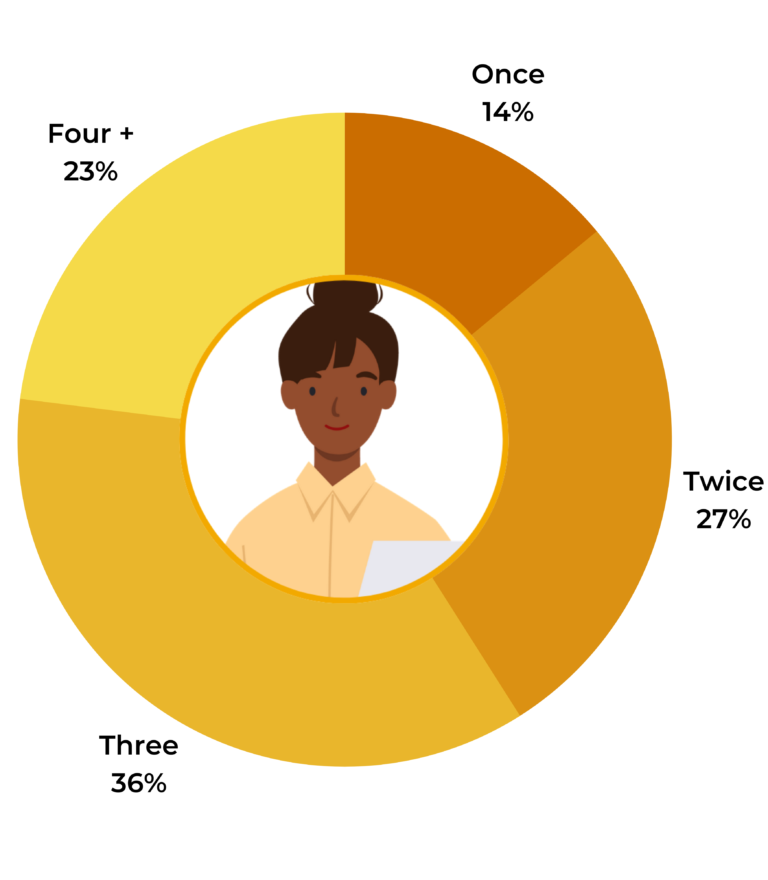
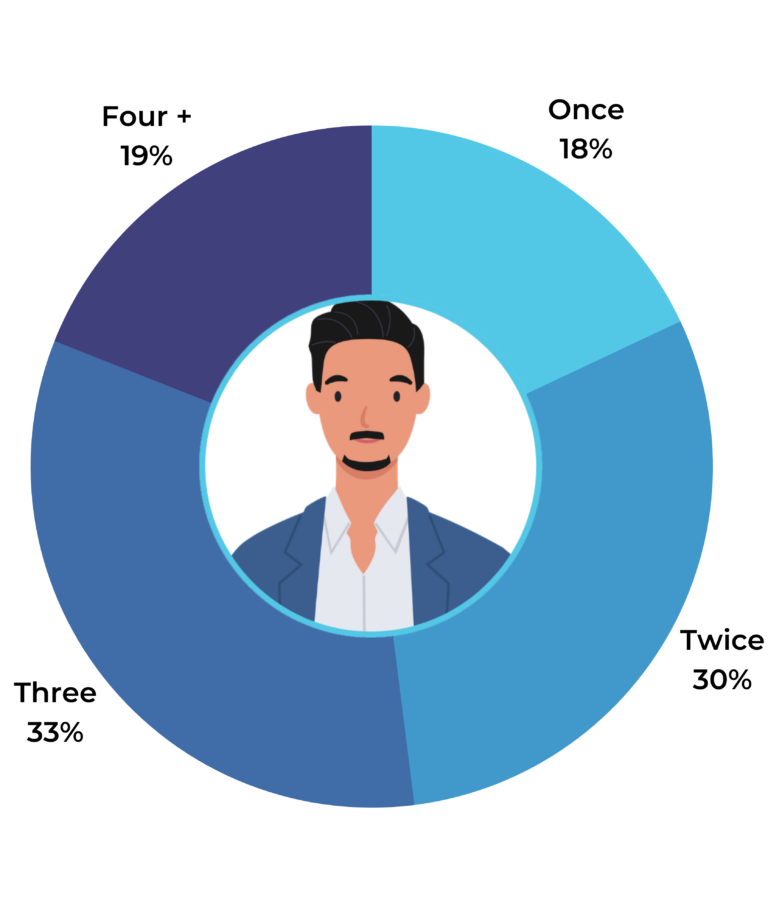
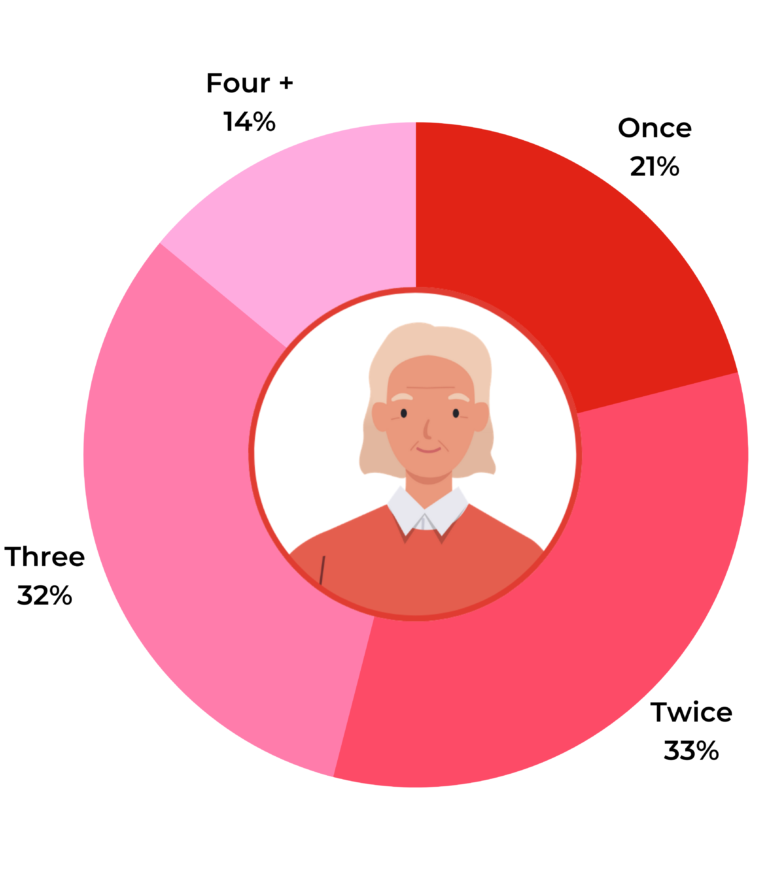
How Existing Reviews Influence Content Generation
Does the presence (or lack of) existing reviews have any bearing on whether a consumer decides to submit their own review? As it turns out, yes.
Nearly nine in ten (89%) of consumers say they’re more likely to submit a rating and review for a product if it currently has a low volume of reviews, compared to 86% the previous year. As we mentioned earlier, 72% of consumers indicate they’re motivated to write reviews because it helps and guides others. By submitting a review for a product that has little to no existing content, they’re doing just that.
Notably, Gen Z’ers are the group most motivated by a low volume of reviews – and Boomers are the least motivated.
In addition, 89% of consumers say that reading existing reviews for a product increases their likelihood of leaving their own review – up slightly from 87% in 2021.
Of note, Millennials are the generation most likely to be motivated by existing review content – and Boomers are the group least likely to indicate this is a motivator.
The Impact of Product Price on Review Submission
Higher priced products typically require a higher level of consideration before purchase. So it’s easy to assume that consumers are also more likely to write reviews for these bigger ticket items.
But for most consumers, this isn’t the case. Nearly three-quarters (71%) of consumers say a higher price tag doesn’t increase their likelihood of leaving a product review – down from 78% of consumers who said this was the case in 2021.
Interestingly, those with higher household incomes are more likely to say that a high price point increases their likelihood of contributing a review.
The reality is, consumers write reviews for products across a wide range of price points, with products ranging from $11 to $100 generating the largest quantity of reviews. In line with last year’s results, fewer customers leave reviews for products at higher price ranges ($501+). But there’s a simple explanation: there’s a lower volume of purchases at this price level.
6 Key Takeaways for Increasing Review Volume
Nearly all consumers consult reviews. And the presence of this content boosts shoppers’ confidence and conversion. It’s important to generate a steady stream of reviews across your entire product catalog. Understanding shoppers’ motivations for submitting content is key to generating more of it.
The following are six key takeaways from our latest survey.
Some brands and retailers may think they’ll meet resistance when requesting reviews. But review submission is something most consumers are familiar with. 92% say they submit reviews at least once every six months. And 60% do so multiple times per month.
Clearly, consumers are willing to contribute content. The onus is on brands and retailers to ensure the timing and conditions are right.
While most consumers are willing to write reviews, many won’t do so of their own accord. Instead, they need to be asked. The most effective way to do so is to send a post purchase email asking that the shopper submit reviews for recently purchased products.
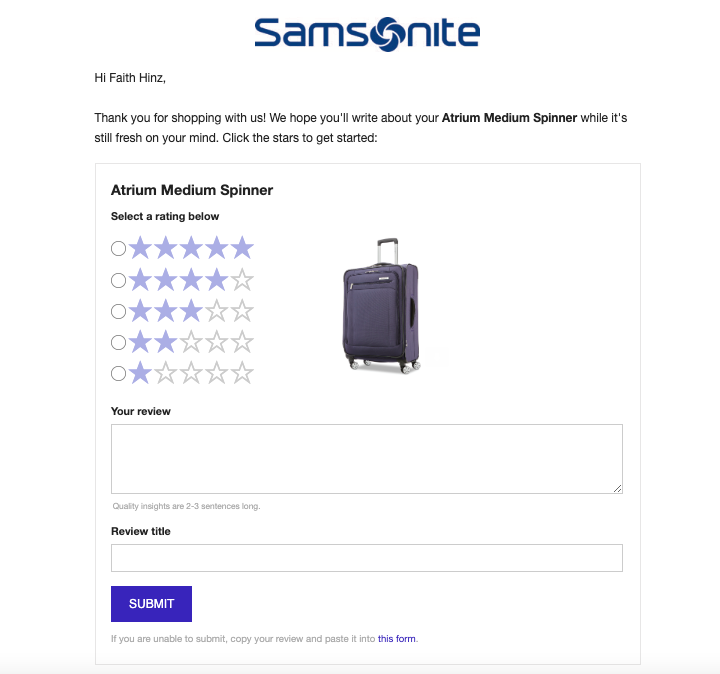
But oftentimes, a single request isn’t enough. Over half (58%) of shoppers say they need to be asked at least twice before they’ll submit a rating and review.
Always send a second post purchase email. Doing so is a sure way to generate more content from those who need an extra nudge.
There are myriad factors that influence whether or not a shopper will contribute a review. But a positive experience tops the list. 92% of shoppers say a great experience motivates them to write a review. It’s essential to provide great experiences throughout the purchase journey.
Free samples are also a motivator for 86% of shoppers. So if you’re looking for a simple way to generate a high volume of reviews quickly, consider executing a product sampling campaign.
Offering an incentive is an effective way to increase review volume. Our survey found that free samples (93%) and early access to a product (89%) are the most enticing incentives.
While incentives can positively impact volume, offering one typically doesn’t impact the content of the reviews submitted. However, it’s still important to be transparent and badge any reviews that were generated as the result of a free sample or other incentive.
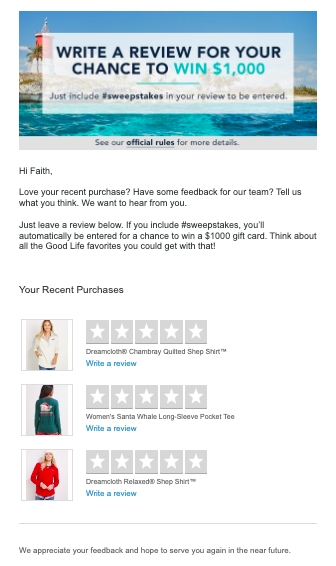
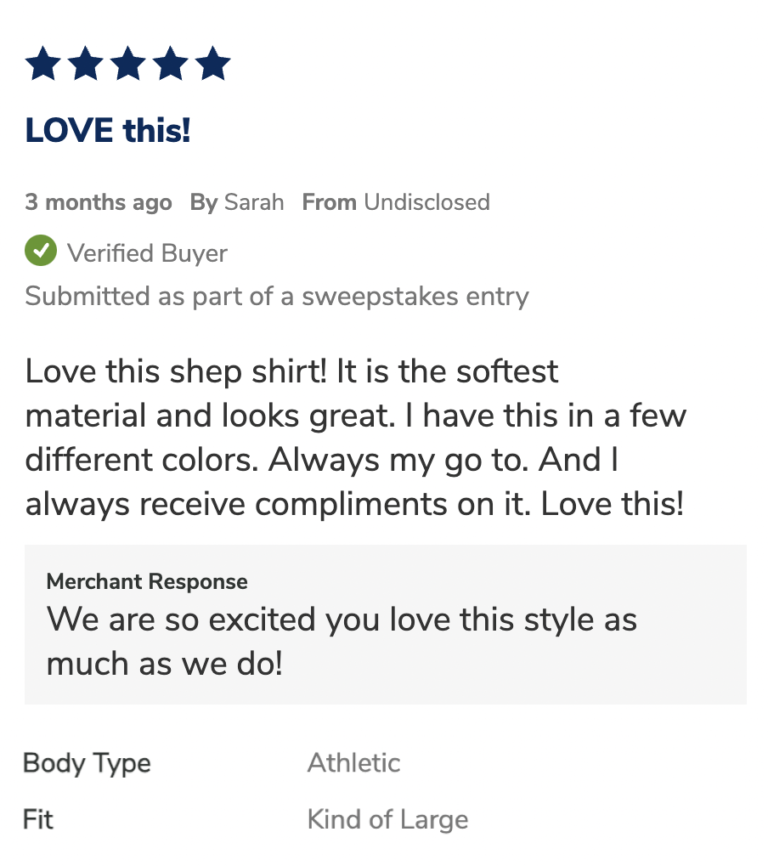
It’s important to give the shopper enough time to try out the product multiple times before asking for a review. After all, 86% say they’re more likely to submit a rating and review if they’ve used the product more than once.
But don’t wait too long before sending your request. Nearly seven in 10 (69%) of shoppers say they’re willing to provide a review within a week of receiving and using a product.
When it comes to soliciting reviews and visual content, best practices are a great place to start. However, each business is different, and it’s important to find out what works best for yours. Establish your review collection strategy. Then, be sure to measure your results on an ongoing basis. That way, you can identify opportunities to optimize your program – and start generating an even higher volume of this conversion-boosting content.

